Since the beginning of the COVID-19 pandemic, questions have persisted about how the outbreak started and whether this was a disaster that could have been prevented.
But while we can't turn back time and change the course of events that made 2020 a year when millions of lives were lost across the world and many livelihoods destroyed, we might be able to do something about the future. Experts are warning that pandemics could be in the making in factory farms – and action must be taken now to prevent them.
04:08
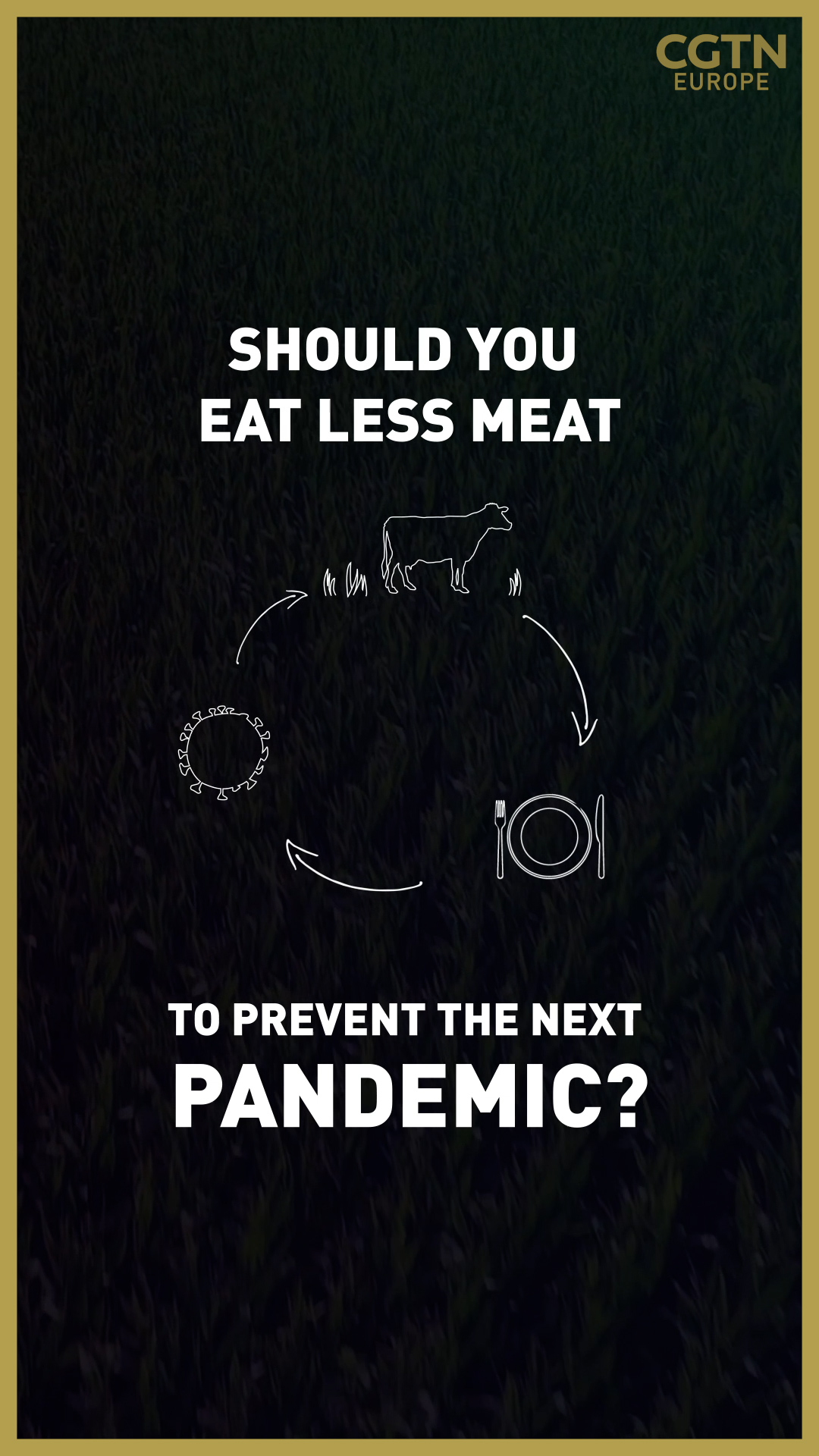
The link between animals, humans and pandemics
To the best of our current knowledge, the COVID-19 pandemic started with the transmission of the virus from an animal host (likely a bat that might have infected an intermediate host, possibly a pangolin) to a human.
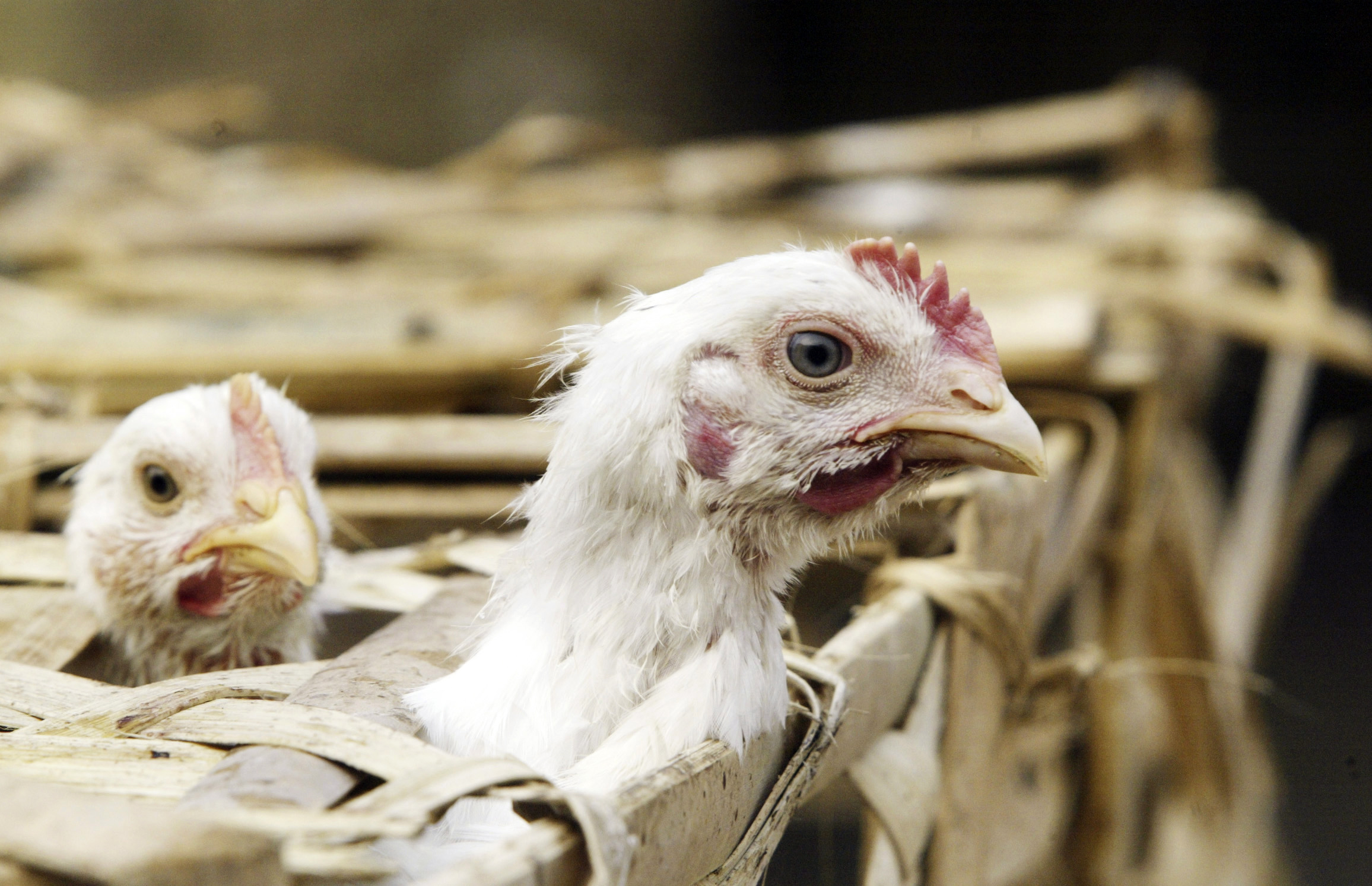
The H5N1 bird flu first emerged among humans in 1997 and continues to infect and kill hundreds of people to this day, with more than 800 reported cases and 400 deaths between 2003 and 2019. /Irwin Fedriansyiah/AP Photo
The H5N1 bird flu first emerged among humans in 1997 and continues to infect and kill hundreds of people to this day, with more than 800 reported cases and 400 deaths between 2003 and 2019. /Irwin Fedriansyiah/AP Photo
In the context of disease outbreaks, this spillover from animal to human is nothing surprising: according to a research by the U.S. Centers for Disease Control and Prevention (CDCP), three out of every four new or emerging infectious diseases in people come from animals.
But whereas wildlife is the most common source of infection, as it was the case for COVID-19, some of the deadly outbreaks that spooked the world over the past two centuries – including the bird flu, SARS, the swine flu, and MERS – originated from farm animals.
"The direct transmission from an animal to a person actually is a very rare event," says Richard Kock, an infectious diseases specialist at the Royal Veterinary College, University of London.
"The truth is that it's really difficult to get an infection from a bat," he says. "Animals tend to keep to themselves, particularly wildlife, actually. So domesticated animals act a bit as a bridge."
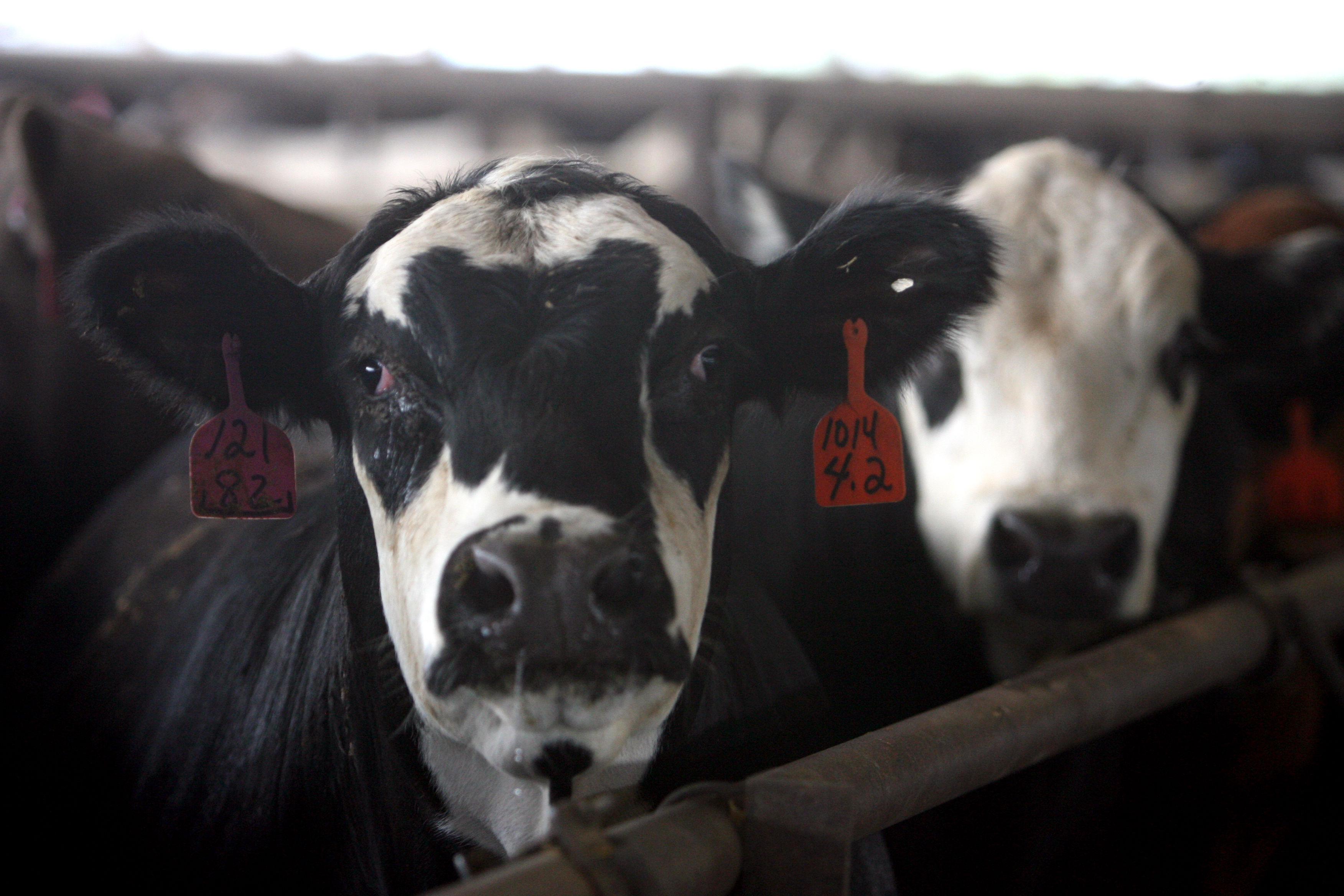
The global cattle population in 2020 is estimated to be 987.51m. /Charles Osgood/AP Photo
The global cattle population in 2020 is estimated to be 987.51m. /Charles Osgood/AP Photo
Today, livestock accounts for 60 percent of all mammal biomass, where cattle is the most abundant on the planet – in 2020, the global cattle population is roughly calculated to be 987.51 million.
In the European Union alone, there were 148 million pigs, 87 million bovine animals and 98 million sheep and goats in 2018 (the latest data available).
"What has happened on the planet, along with population growth and so on, is growth in domestic animals," says Kock. "We now have probably three times the total biomass of humans, which are domestic animals."
In order to breed and feed those animals, humans have destroyed a lot of natural habitats. "Deforestation is actually quite closely associated with the growth in domestic animals for food," says Kock.
A study conducted by the UCL Centre for Biodiversity & Environment Research and published in Nature, found evidence that the way humans are transforming natural landscapes into farmland is disrupting the balance of wild animal communities and increasing the risk of spillovers of infectious diseases from those same animals that, after surviving the loss of their natural habitat, are forced into closer contact with people.
We need to re-examine our diet and the numbers of animals that we keep on the planet for our purposes
- Richard Kock, The Royal Veterinary College
The outbreaks of Nipah virus in Asia in 1998-9 confirm the results of this research, according to Kock: "What happened, was that in places like the Philippines, they started agricultural development in certain areas associated with bat populations. And these were a combination of fruit farms and pig farms," Kock explains.
As bats lost their natural food source, they went looking for food in the rows of fruit trees cultivated by humans. "You can't blame the bat for doing that," says Kock. "It has lost its natural products, so it went and did that. And in the process, it leaves its defecation and its urine.
"And these fruits then were given to the pigs or fell into the pig pens. The pigs then ate them and enjoyed them and then got infected by the virus."
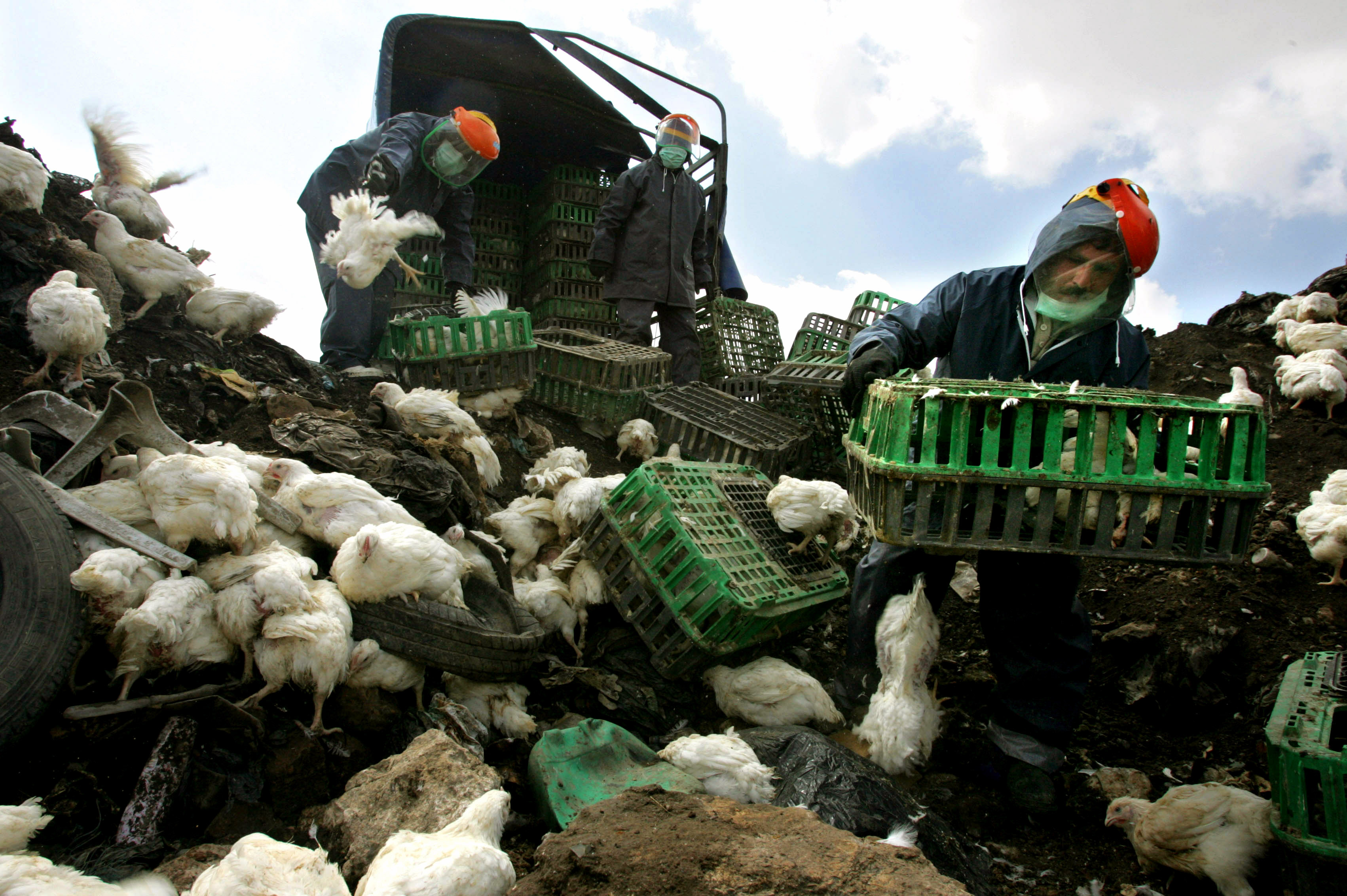
Members of a Palestinian Authority veterinary medical team dispose of chickens from Israel to be buried alive as a precaution against bird flu. /Kevin Frayer/AP Photo
Members of a Palestinian Authority veterinary medical team dispose of chickens from Israel to be buried alive as a precaution against bird flu. /Kevin Frayer/AP Photo
The people tending to the pigs, being in close contact with the infected animals, also got sick and transmitted the virus to their families, thus starting the Nipah outbreak.

Now, according to several scientific studies, the large numbers of livestock crowded in confined spaces in industrial intensive farms around the world would make a similar infection scenario even more risky.
It is estimated that 90 percent of all farmed animals in the world are currently living in factory farms, where they're usually raised in confinement or in crowded spaces with no access to soil or sunlight and under a diet of transgenic food and antibiotics. Because livestock in intensive farms is usually bred to be almost genetically identical, viruses can spread quickly with no resistance within the animal population.
A recent study by the University of Sheffield and the University of Bath in the UK found that the overuse of antibiotics, the high numbers of animals and low genetic diversity typical of intensive farming are all factors contributing to the risk of epidemics in these environments.
"Human pathogens carried in animals are an increasing threat and our findings highlight how their adaptability can allow them to switch hosts and exploit intensive farming practices," said Dave Kelly from the department of molecular biology and biotechnology at the University of Sheffield, who led the study.
Intensive animal farms proved to be a dangerous breeding ground even for the COVID-19 pandemic. In Germany, U.S. and Brazil slaughterhouses and meat-processing plants were associated with large clusters of COVID-19 infections and a dangerous COVID-19 mutation developed in the mink fur farms in Denmark.
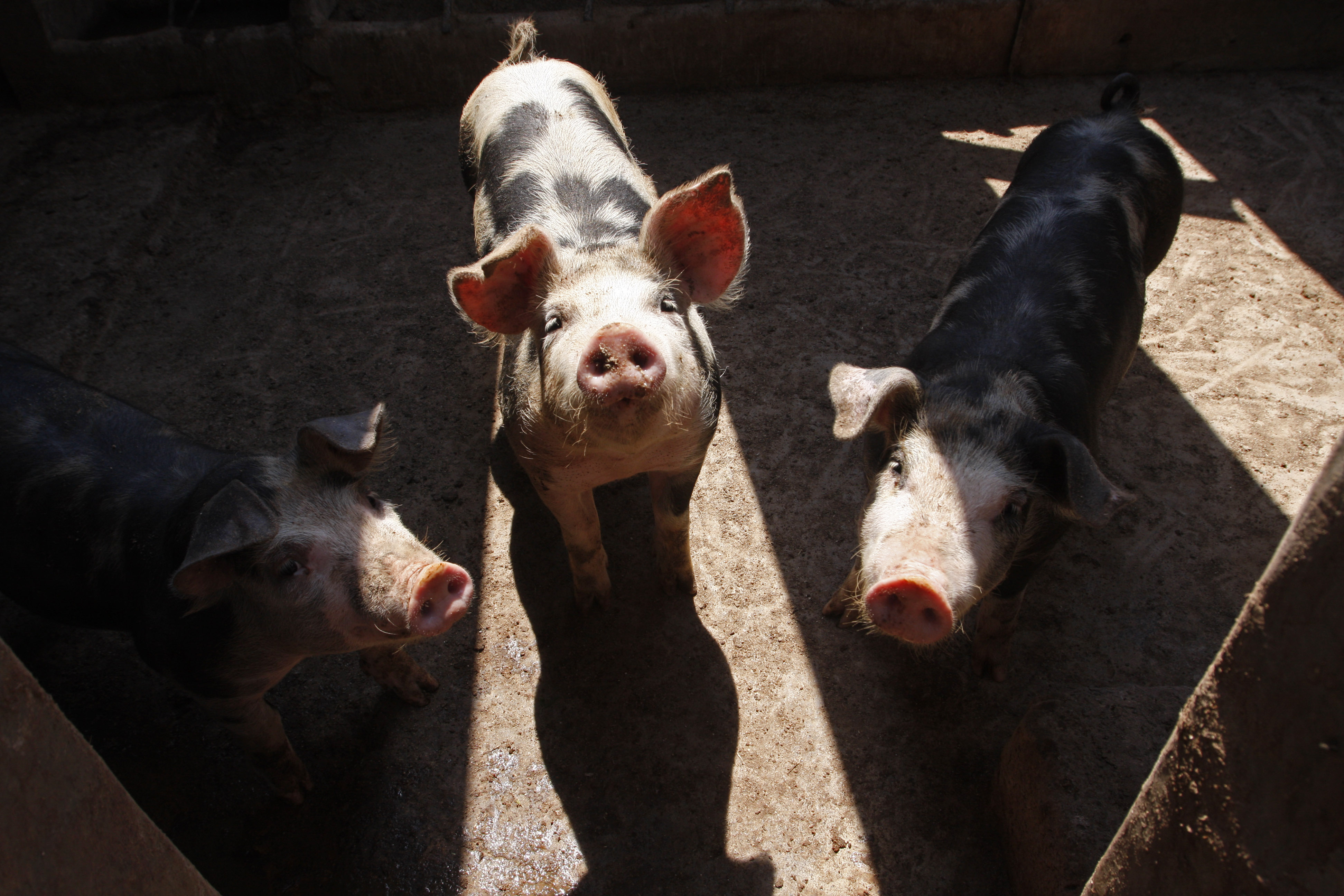
In 2009, the H1N1 swine flu circulating among the pig farm population in North America made the jump to humans as a result of slaughterhouse workers getting in close contact with infected meat. /Marco Ugarte/AP Photo
In 2009, the H1N1 swine flu circulating among the pig farm population in North America made the jump to humans as a result of slaughterhouse workers getting in close contact with infected meat. /Marco Ugarte/AP Photo
"Because of the intensive farming, once you get one animal infected, you get, you know, they're so close to each other that you get the transmission quite quickly," says Joanne Santini, a microbiologist at University College London.
The risk of zoonotic diseases spilling over into humans and becoming a pandemic has raised the question: should we change the way we farm animals and the way we eat to avoid future disease outbreaks?
Can we do away with factory farms?
The growing world population together with the increased demand for cheaper food in greater volumes has fueled the rise of the industrial intensive farming system, which some think is unlikely to be abandoned anytime soon.
One reason above all is the world's ever-growing demand for meat. Global meat consumption increased by 58 percent over the 20 years leading to 2018, to reach 360 million tons in total.
Daniel Berckmans, a professor at the University of Leuven, whose research focuses on the automatic monitoring of livestock, plants, and humans, believes there's a way to satisfy the increasing demand for meat without increasing the livestock population: "We have to run the process more efficiently with less feed and put less manure, less emotion, to have more animal products."
We can't stop the demand for animal products even if we wish so
- Daniel Berckmans, University of Leuven
According to Berckmans, this can be achieved by perfecting intensive farming methods, instead of abandoning and minimizing them altogether: he believes that when it comes to disease prevention, livestock is safer when kept indoors than outdoors, where it can easily get in contact with wild animals.
The key to increasing production while respecting animal welfare, according to the German scientist, is to carefully monitor the stress levels of livestock and make sure there's no unnecessary stress and loss of energy.
"If we have that, then we can manage animals so that they stay in their comfort zone where they feel happy," says Berckmans. "Then we will get a better production. We will get less diseases. That's what we claim. It's all about a balance between the energy use, the body energy use and the body energy to recover."
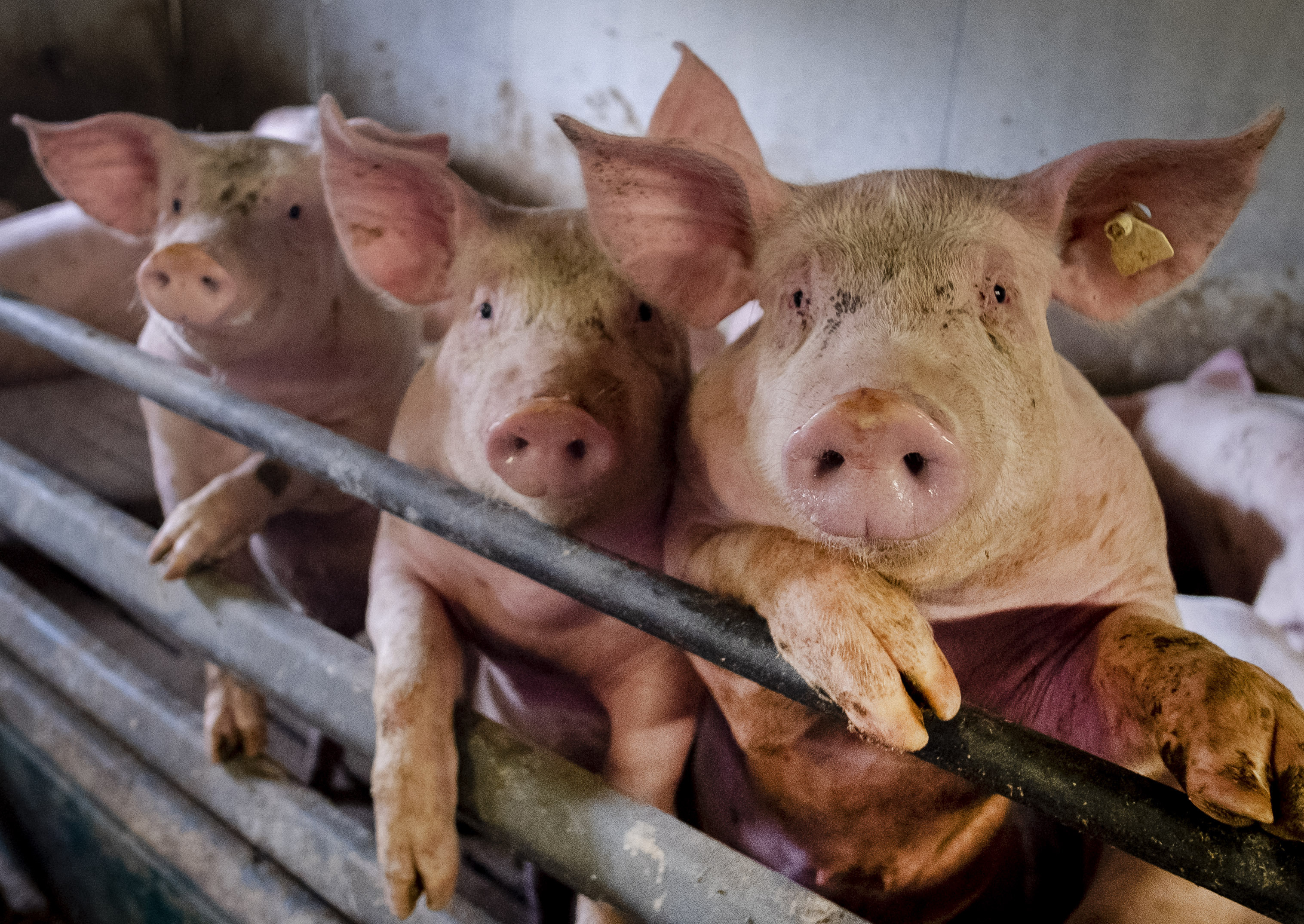
A pig farm in Harheim near Frankfurt, Germany. The pigs are sold to local butchers and slaughtered there. /Michael Probst/AP Photo
A pig farm in Harheim near Frankfurt, Germany. The pigs are sold to local butchers and slaughtered there. /Michael Probst/AP Photo
But for some concerned about animal welfare, this dream of total efficiency at the expense of what most would consider decent living conditions for livestock – fresh air and mobility – isn't the right solution.
"If you have a total sterile animal breeding from a disease point of view, that's better, right?" says Fabian Leendertz, epidemiologist at the Robert Koch Institut in Berlin.
"If you go to an intensive chicken farm, for example, you have to change your clothes, you get extra boots and disinfectant. You know, it's almost like going into Ebola isolation," he says.
"You are really dressed up to not bring anything in there. So obviously, the meat of those chickens will have less pathogens than the happy chicken running around in the garden, but then we prefer the happy chicken from the garden.
"That means that if we want those happy chickens, we have to make sure we introduce other measures to reduce the disease risk, like more hygienic handling of the meat, better cooking practices and things like that."
Experts have also questioned whether we need to eat as much meat as we do in the first place. The large availability of mass-produced meat has been proved to contribute to coronary heart diseases, diabetes, obesity, and some forms of cancer. Moreover, meat-consumption plays a huge role in the climate crisis.
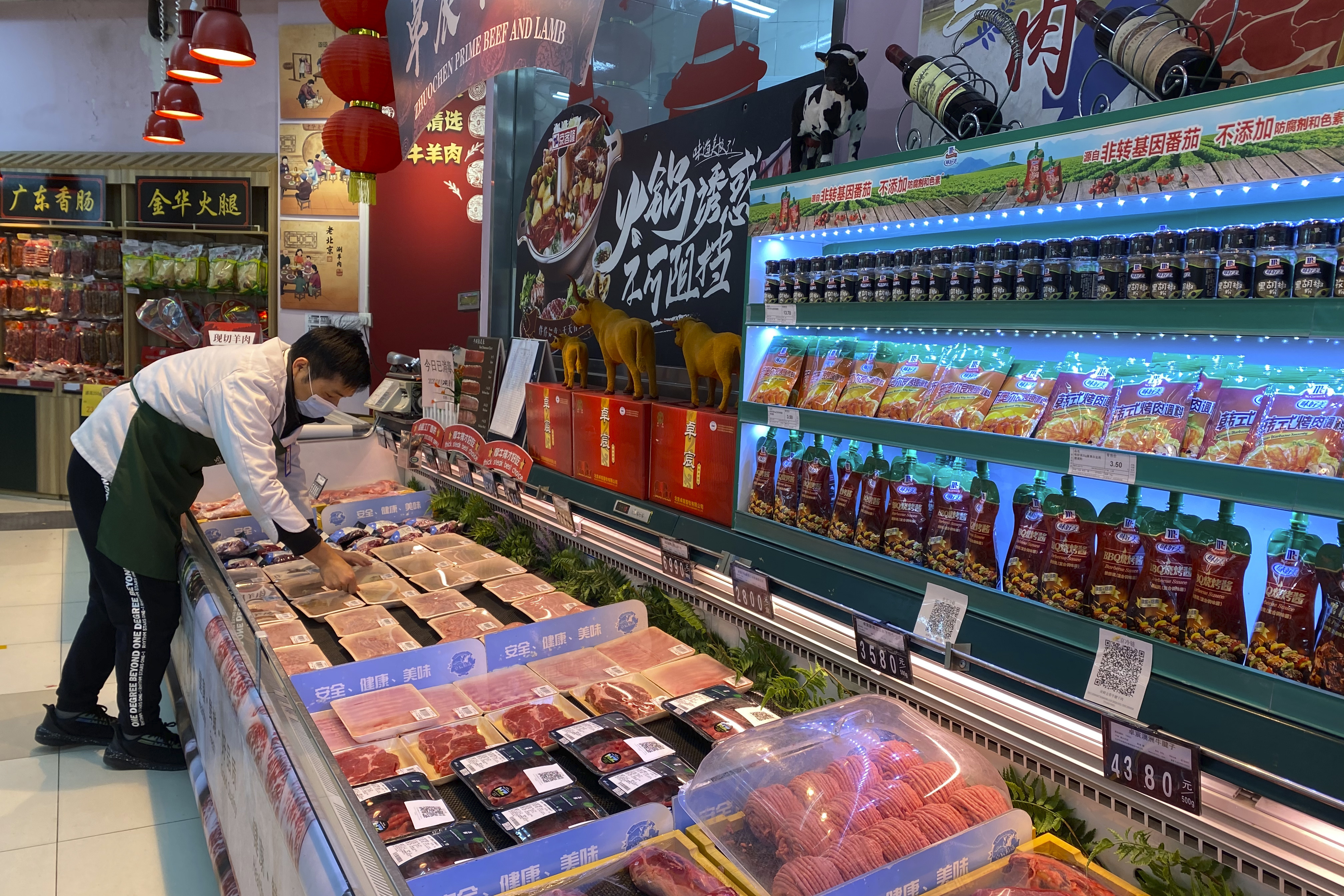
A worker wearing a mask handles meat products including beef from New Zealand packaged with a QR-code linked to its COVID test results at a supermarket in Beijing. /Ng Han Guan/AP
A worker wearing a mask handles meat products including beef from New Zealand packaged with a QR-code linked to its COVID test results at a supermarket in Beijing. /Ng Han Guan/AP
"The livestock sector is responsible for about 15 percent of the world's greenhouse gas emissions, as well as water and air pollution, and 70 percent of the global crop production goes to animal feed," says Reineke Hameleers, CEO of Eurogroup for Animals, a pan-European advocacy organization for animals.
Different practices developed in recent years have proved the evolution of intensive farming into a better, more sustainable method is possible. Most importantly, thanks to the growth of the vegan movement in the past decade and the increased awareness from the current environmental emergency, the public seems to be in favor of such a change.
"The good news is that there are many alternatives and promising developments," says Hameleers. "Business innovations such as cultivated meat, precision fermentation and plant-based alternatives to animal products can help us to reduce animal production and consumption."
How can we build a better alternative?
Organic farming, where farmers minimize the use of antibiotics on livestock and the amount of pollution and waste produced, is maybe the most obvious alternative to intensive farming, but one that is not sustainable on a larger scale. It necessarily involves reducing meat consumption.
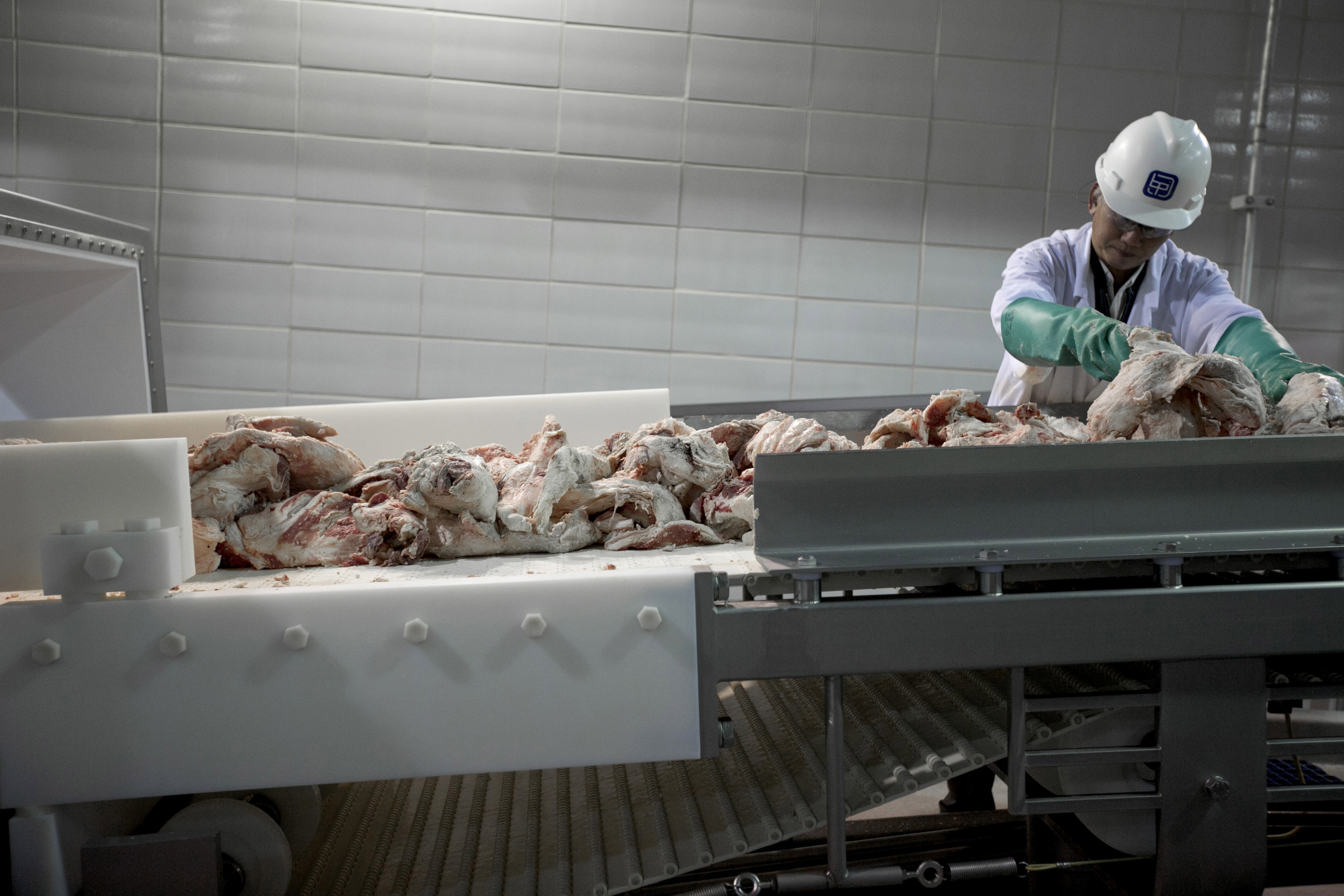
A worker sorts cuts of beef in Nebraska, U.S.. The announcement on April 24, 2012 that mad cow disease was spotted in a California cow drew a rapid response from the beleaguered American beef industry. /Nati Harnik, File/AP
A worker sorts cuts of beef in Nebraska, U.S.. The announcement on April 24, 2012 that mad cow disease was spotted in a California cow drew a rapid response from the beleaguered American beef industry. /Nati Harnik, File/AP
There has been growing acceptance of veganism in the past 10 years and increasing interest in plant-based products even from non-vegans or vegetarians.
But a study of the public understanding of climate change and its relation to meat consumption conducted by Catherine Happer and Laura Wellesley suggests that a significant global change in dietary habits is still far from being achieved and needs to be positively encouraged by governments.
According to Happer and Wellesley, national authorities will need to make the reduction of meat consumption a priority and the media will need to step in with better information campaigns, emotional appeals and social incentives to bridge the current awareness gap and influence real behavioral changes.
"If the ambitious targets set out in the [UN] Sustainable Development Goals are to be realized, and the most extreme climate change scenarios to be avoided, we will need to bring about both a reduction in global aggregate meat consumption levels and a more equitable distribution of consumption across developing and developed countries," they conclude in the study.
Another alternative to intensive-farmed meat that's only recently becoming a viable option is cultured meat – meat grown in a lab from cells extracted from living or slaughtered animals. From these cells, tissue is grown by feeding the cells the same food a farmer would feed livestock, but within the confines of a bioreactor.
Illtud Dunsford, co-founder of the biotech start-up Cellular Agriculture, comes from "a family that farmed for over 300 years and still lives on the farm with a small amount of livestock," but he's now in charge of one of the leading UK companies specializing in cultured meat.
We need a whole toolbox of technologies that can combat how we produce food in order for everybody to live
- Illtud Dunsford, Cellular Agriculture
He sees lab-grown meat as an alternative that could compete with meat produced via intensive farming. "I don't see it really as the solution of what we do within agriculture at the moment, I see it as a next step," he says.
"It's essentially looking at how we currently produce meat and taking a holistic approach of all those inputs that go into it and its effect on the planet and how we can do it in a better way."
According to Dunsford, most analyses prove cultured meat is more environmentally sustainable than intensive farming. "There's a reduction of around 90 percent in greenhouse gas emissions, about 90 percent reduction in land use and about 50 percent reduction in water use."
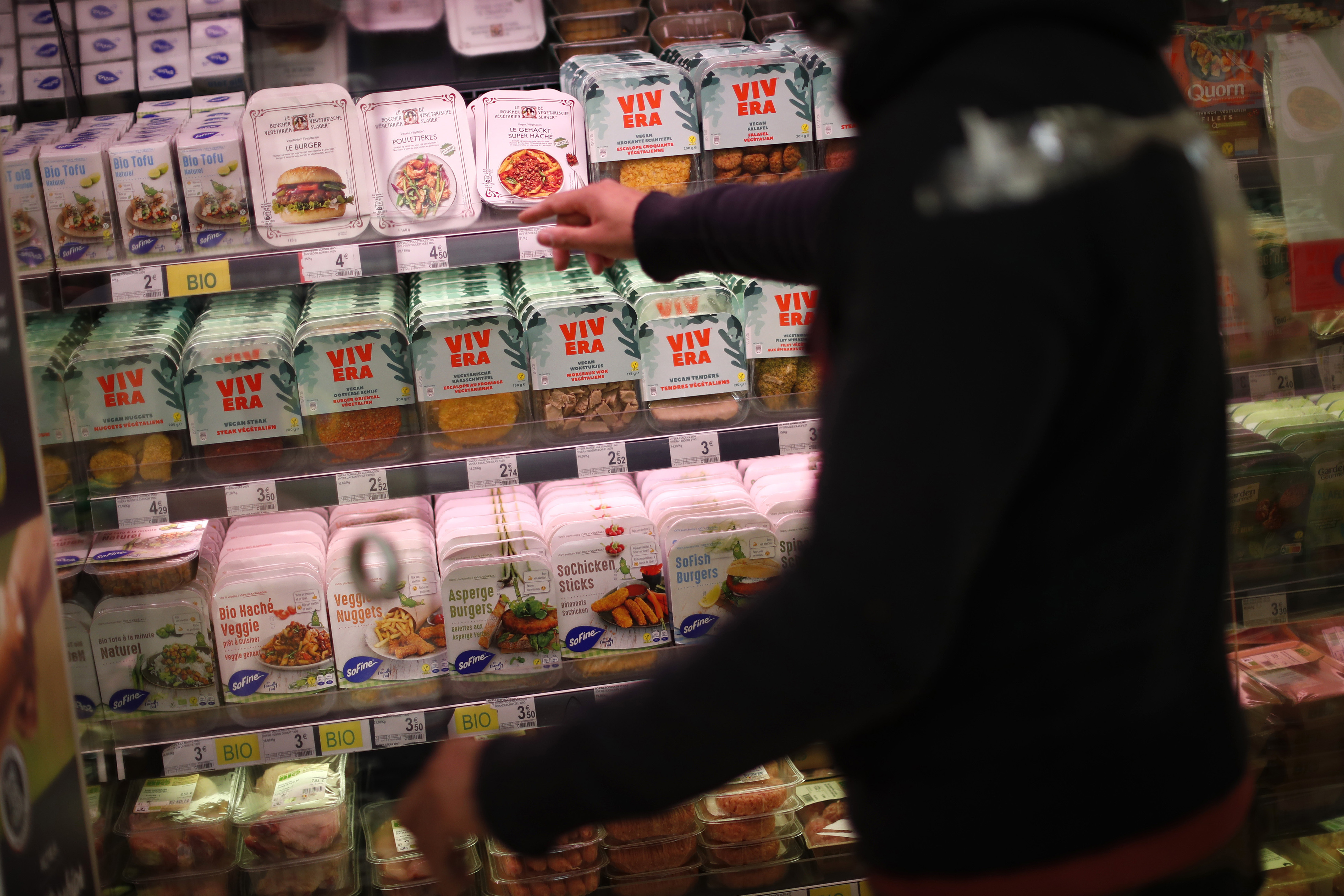
A store worker shows plant-based products at a supermarket chain in Brussels, Belgium. /Francisco Seco/AP Photo
A store worker shows plant-based products at a supermarket chain in Brussels, Belgium. /Francisco Seco/AP Photo
The next stage will be to industrialize the process, now still a niche in the meat market – and a very expensive one at that.
In early December, Singapore became the first country in the world to allow the sale of cultured meat, a record approval that is likely to push forward progress in the sector.
"I think that there will be products on the market, probably quite costly, within the next two years, because if we just look at the regulation framework of how some companies, some countries, are working at the moment, the timescale at the moment is set to be 2022," explains Dunsford.
"But in terms of it being in your local grocery store, that's a leap that's probably at least 10 years away, if not longer."
Avoiding the next pandemic is closely tied to the issue of fighting the climate crisis: both require us to reconsider the impact of human activities on the planet and reform our whole relationship with the natural world.
"We need to find a better holistic system of producing food from the land," says Dunsford. "If that means less livestock and more plants, well, that's what we have to do. But we have to be conscious that it's not just about having a planet there for my lifetime, but for the many generations to come after me."
Video editing and animation: Steve Chappell
Cover image: Alexandre Meneghini/AP Photo

